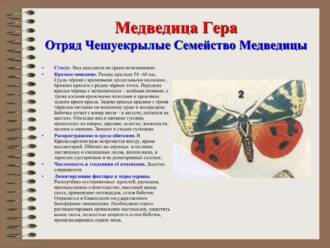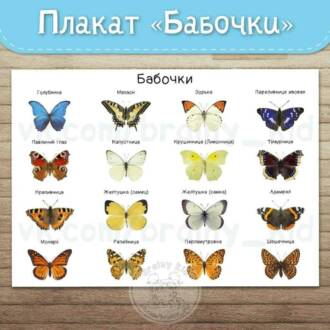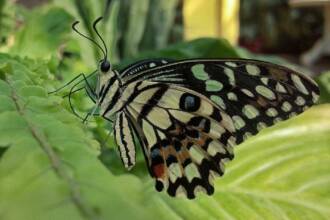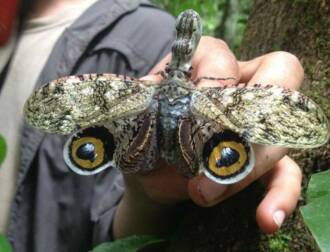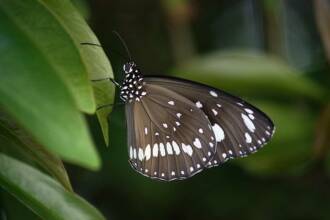What miracles the great and powerful nature does not create! This is especially true of huge butterflies, which, from unpleasant-looking caterpillars, turn into real beauties, resembling flower buds fluttering through the air.

There are species of these insects that can surpass the average bird in their size. Basically, fluttering giants are common in the tropics. It is difficult to say which of the butterflies is the largest in the world, but the most grandiose ones are worth considering in more detail.
Urania Madagascar
Madagascar Urania can be found on the island of Madagascar. She received this name in honor of the Muse of the science of astronomy. Its wingspan is 12 cm. This beauty is active during the day, warmed by the rays of sunlight, she flutters over flowers, collecting nectar from them.

The active growth of Urania begins in May and continues until the end of July. The Madagascar beauty is distinguished by the unusual coloring of the wings, which shimmer in the sunlight with the whole spectrum of rainbow colors.
Sailboat Maaka
This butterfly lives in Russia, mainly in the Far East. In addition, it can be found on the Japanese coast, in Korea and China. It received this name in honor of the naturalist who studied insects at the end of the 19th century - Richard Maak. The wings of the Sailboat can open up to 13.5 cm.
Incredibly interesting color of her wings:
- the front part of the wings of the male is painted black, on which a green coating flickers, thickening towards the edges into an emerald hue border;
- on the opposite part of the wing one can see a kind of fringe, in the form of the finest laces of small hairs;
- the wings of the female are evenly colored brown, only a few green dots can be seen on its front surface;
- the border, located at the very edge of the beauty's wings, contains shades of green-blue and red-violet colors.

Such butterflies are common in deciduous forests, but they can be found even in spruce forests and mixed plantings. At a time when the widespread flowering of subalpine vegetation begins, Maak's Sailboat can rise to a height of 2000 m above sea level.
Ornithopter Chimera
Chimera is a truly unique butterfly, it is able to perform incredible turns and stunts in the air. This ability is given to her by wings, one of the largest in the world, which have a span of 15 cm.
Ornithoptera is common in New Guinea and on the island of Java, it prefers tropical rainforests, living at an altitude of 1200 to 1800 meters above sea level.

Chimera females are slightly different from males in their color and size. Their wings are painted in shades of black and white, while males are distinguished by a wide variety of shades.
Peacock-eye Pear
The pear peacock-eye belongs to the Lepidoptera order. She lives both in Europe and in Russia. The wingspan of this giantess can vary from 12 to 15 cm.

Butterfly wings incredibly beautiful - along the edge they are outlined with a white edging, and in the upper part they are decorated with large eyes circled in a silvery line.
Pear Peacock-eye is the rarest species of butterflies listed in the Red Book.
Golden Birdwing
The Golden Birdwing is a real beauty, standing out among all giant butterflies. It is not easy to meet her, she tends to hide deep in the tropics of South Asia, in impenetrable forest thickets.
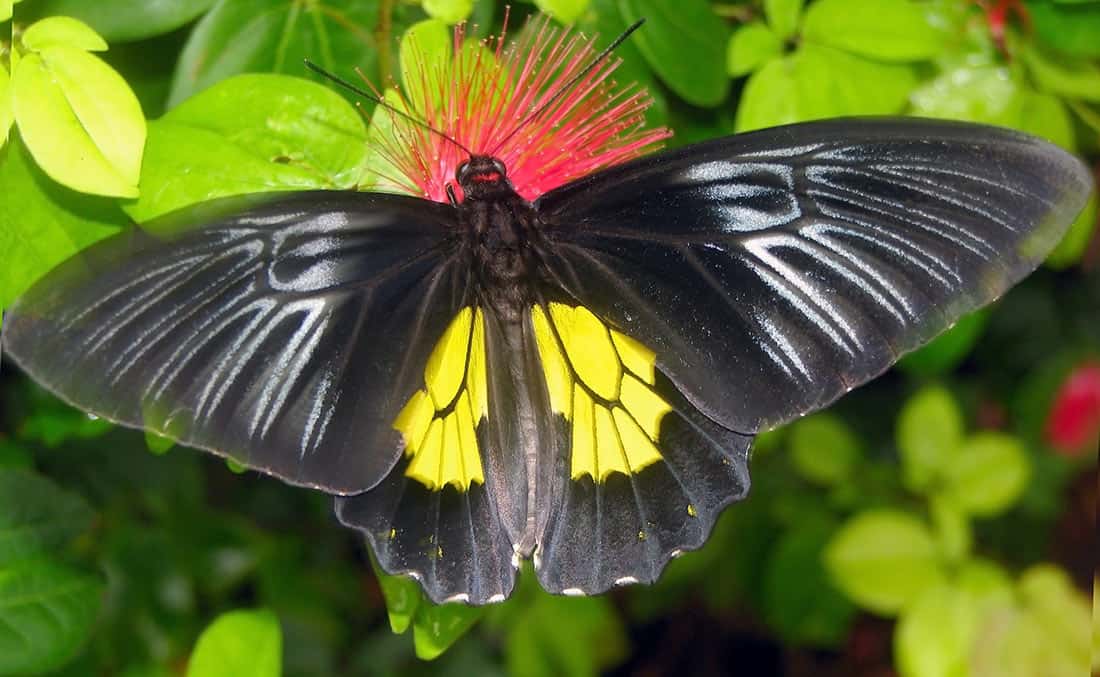
The wingspan of this insect can reach 16.5 cm. The flight of this giant resembles the soaring of a magical bird, which is facilitated by the unusual color of the wings. The latter have a shade of golden-yellow color, cast with mother-of-pearl and let the sun's rays through them.
Among Asian peoples, this beauty is considered a symbol of financial well-being, so many seek to find her and hold her in their hands for at least a few moments.
This butterfly is a very rare species that is listed in the Red Book.
Saturnia Madagascar
Madagascar Saturnia or Comet is a butterfly, the image of which is immortalized on a banknote of 5000 Malagasy francs. In the world, this giant is called the moon moth, which in no way detracts from its beauty and grandeur.
The wingspan of Saturnia reaches 16-18 cm, and at their end there are long tails that develop beautifully in the field and increase the span to 20 cm. Unfortunately, they often and rather quickly fall off during the flight. The wings are painted yellow, and in the middle of each of them there is a brown eye, in the center of which there is a black dot.
As the name implies, the butterfly lives in Madagascar, it is nocturnal. To date, this species of butterflies is under protection, because it is actively disappearing from the surface of the earth.
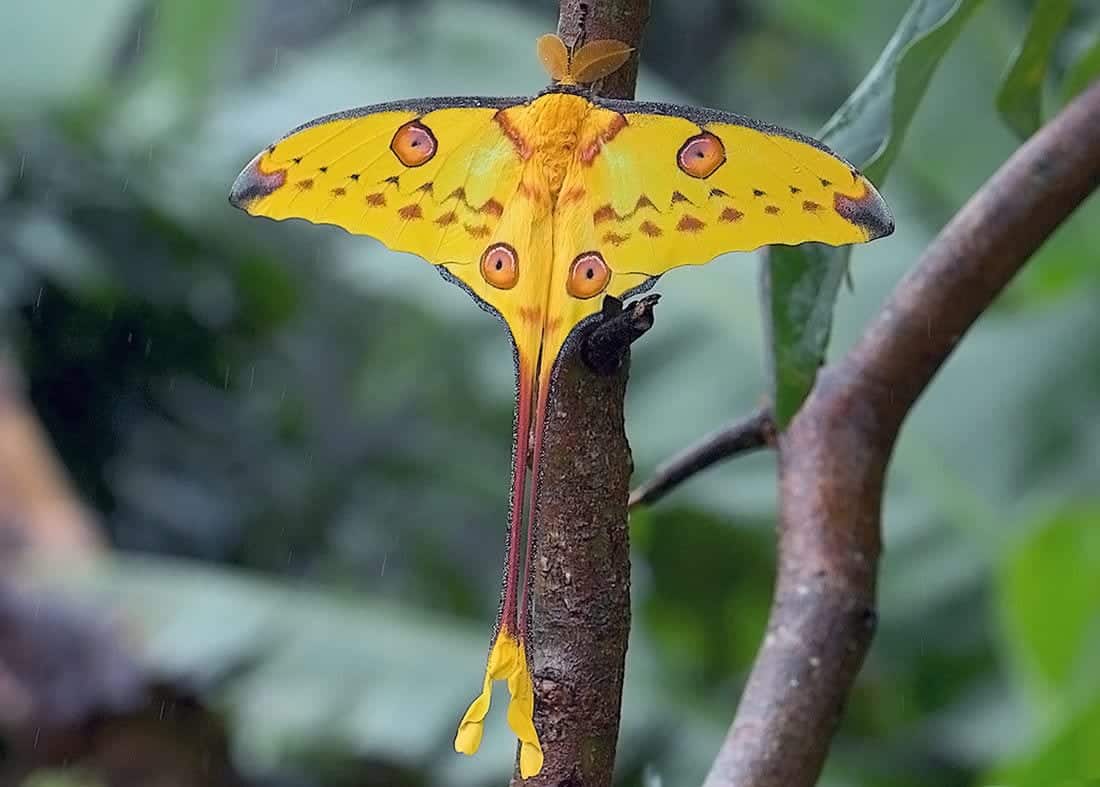
A beauty from Madagascar lives only 2-3 days, and all because she does not have a mouth and digestive tract. Therefore, it is able to exist only as long as the nutrients accumulated by it during the period of being a caterpillar are enough.
Ornithoptera croesus
This butterfly is named after the last known king of Lydia, Croesus. She lives on the islands of Indonesia.

The wingspan of the beauty reaches 16 - 19 cm, and their pattern is incredibly beautiful: black inserts are located on the yellowish-orange surface, if the light falls on them at an angle, then the wings seem to glow with a greenish-yellow tint.
Trogonoptera Trojan
A butterfly with such an interesting name is found in the Philippines, mainly on the island of Palawan. And the name of its species came from Ancient Greece.

The wings of this butterfly have a velvety black hue; when open, they reach 19 cm. Moreover, the female can be somewhat larger than the male.
Birdwing "Goliath"
This butterfly is one of the largest in the world - its wings can open up to 22 cm long, a bright beauty lives in the mountainous area of the Moluccas archipelago, as well as on the coast of New Guinea. It is able to climb mountains to a height of up to 2200 m above sea level.

Butterfly belongs to the Sailfish family, the color of her wings consists of several shades of black, yellow and green, this applies to males, while females have brownish wings, with spots of a light shade. To date, 7 subspecies of the Goliath butterfly have been studied.
Sailboat "Antimachus"
Antimachus is one of the largest butterflies that lives on the continent of Africa, in the territory from Uganda to Sierra Leone. According to researchers, its wings open up to 24 cm.
The wings of Antimachus are bright, slightly reminiscent of the color of the skin of a leopard, the patterns that adorn them vary, invariably creating extraordinary ornaments. Despite its beauty and size, this butterfly poisonous.

This species is not numerous, butterflies are gradually becoming rare, which is affected by the active deforestation of virgin forests.
Peacock-eye "Atlas"
This butterfly was named after the hero from Ancient Greece, who, according to legend, held the entire sky on his shoulders. The wingspan of this giant can reach 26 cm, and these species are found in Southeast Asia.
The beauty actively flies at night, feeding on the foliage of shrubs or trees. At dusk, in the morning or in the evening, Atlas is especially active, for which he was nicknamed the Prince of Darkness.

Peacock-eye is also bred in the Moscow Zoo - there you can admire its beauty to the fullest. In particular, on the wings of an insect, which are decorated with shades of yellow, pink and red. At the corners of the hind wings of the butterfly there are transparent windows, and the front wings resemble a snake's head in their shape, which scare away predators that encroach on their lives. The peacock-eye, like some other individuals, is devoid of a mouth, therefore, during its life (this is about 2 weeks), it lives only on the reserves accumulated during the period of being a caterpillar. Do you know that butterflies can be bred at home? More about homemade butterfly farm.
Atlas is an incredibly useful butterfly; in Taiwan, cocoons that remain after caterpillars have been used. They put change in them and use them as wallets. In India, such butterflies are bred by farmers, obtaining loon silk, which has qualitative differences from products created by silkworms.
Males of the Atlas peacock-eye are able to find a female for mating several tens of kilometers away.. Moreover, the mating process takes place over several hours. It is worth noting that the process of reproduction is a key one in the life of females, they die immediately after they create offspring.
Peacock-eye Hercules
This representative of the Lepidoptera family also got its name in honor of the hero of Ancient Greece - Hercules. Peacock-eyed Hercules is a real giant, he is able to spread his own wings (having an area of 263 square centimeters) over a distance of 27 cm, therefore it is considered the largest butterfly on the Australian continent.

Hercules is distinguished by wings of an unusual shape, on which you can see a disc-shaped spot. These insects lead a predominantly nocturnal lifestyle.
Queen Alexandra's Birdwing
This butterfly is distinguished not only by its incredible name, but also by its size. It is considered the largest of the diurnal individuals and all thanks to the wings, the span of which can exceed 30 cm.

Birdwing lives in the tropics of New Guinea. It is protected by the state, which strictly ensures that the insect is not taken out of the country.
Tizania Agrippina
Agrippina is perhaps one of the largest butterflies in the world, experts also call it a scoop. Tisania flies only at night, and it lives in Brazil and Peru, preferring tropical rainforests. Sometimes, migrating, it can reach Mexico and the southern part of the USA.
The scoop is difficult to fit in the palm of an adult man, the wingspan of some individuals reaches 31 cm. The butterfly feeds on shrub leaves, it is not poisonous and is carefully protected by the state, because it is on the verge of extinction.

As for the appearance of Tizania, she is distinguished by wings with wavy edges, the upper part of which is decorated with white-brown fringe and stripes of gray and brown. The lower part of the body has a rich brown tint, matte or glossy. Moreover, different individuals may differ in their shades, some will have a snow-white color, others - brown.
Almost all types of butterflies of large size, both diurnal and nightare now considered endangered. In their defense, numerous conventions and laws have been adopted that protect endangered populations and save them for future descendants.
Read more:

